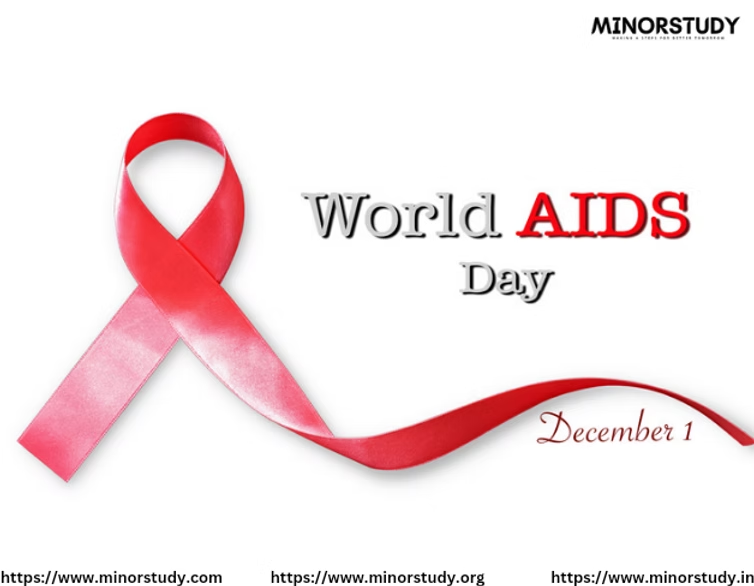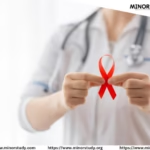Eye-Opening Truths That Reveal the Painful Reality of World AIDS Day
Every year, December 1 marks World AIDS Day — a time to reflect on the global fight against HIV/AIDS, honor those who’ve lost their lives, and show support for those still living with the virus.
- 📜 History of World AIDS Day
- 🧭 Timeline of HIV/AIDS & World AIDS Day
- 📊 7 Eye-Opening Truths About HIV/AIDS
- ❓ Frequently Asked Questions (FAQs)
- 💡 Significance of World AIDS Day
- 🎯 Key Observance Activities
- ❤️ Human Wishing & Compassionate Messages
- 👥 Why World AIDS Day Matters in Our Lives
- 🌍 Daily Life Impact of HIV/AIDS
- 📌 Key Takeaways and Important Points
- 👨👩👧 Importance to Society
- 🔚 Conclusion: From Awareness to Action
Though scientific progress has transformed HIV from a death sentence into a manageable condition, the stigma, misinformation, and inequality surrounding AIDS still exist. It’s not just a health issue—it’s a human issue that affects how we live, treat each other, and build society.
This article dives into the history, significance, key facts, and societal relevance of World AIDS Day, empowering you with the information and compassion to make a difference.
📜 History of World AIDS Day
World AIDS Day was established in 1988 by the World Health Organization (WHO) and UNAIDS. It was the first-ever global health day, created to:
Raise awareness about HIV/AIDS
Fight stigma and discrimination
Remember those who died from AIDS-related illnesses
Mobilize global commitment to ending the epidemic
The first theme in 1988 was “Communication”. Since then, each year has had a theme that reflects global efforts and concerns.
📘 Some Key Themes Over the Years:
1991: “Sharing the Challenge”
2005: “Stop AIDS. Keep the Promise”
2020: “Global Solidarity, Shared Responsibility”
2023: “Let Communities Lead”
🧭 Timeline of HIV/AIDS & World AIDS Day
| Year | Milestone |
|---|---|
| 1981 | First cases of AIDS identified in the US |
| 1983 | HIV virus identified by scientists |
| 1988 | First World AIDS Day observed |
| 1996 | UNAIDS formed |
| 2003 | Global Fund and PEPFAR launched |
| 2012 | WHO recommends HIV self-testing |
| 2020 | Over 38 million people living with HIV globally |
| 2023 | Progress on “95-95-95” goals: testing, treatment, viral suppression |
📊 7 Eye-Opening Truths About HIV/AIDS
38 million people worldwide live with HIV
Despite medical advancements, millions still face this disease with limited access to treatment.Only 76% of people with HIV know their status
Millions are unaware and may unknowingly spread the virus. Testing and awareness are still lacking.Every minute, a young woman gets infected with HIV
Especially in sub-Saharan Africa, gender inequality and poverty fuel vulnerability.Stigma is deadlier than the virus
People fear testing or treatment due to judgment, discrimination, and shame.HIV is not a death sentence anymore
With proper treatment, people with HIV can live long, healthy, and fulfilling lives.U=U: Undetectable = Untransmittable
People with an undetectable viral load due to treatment cannot transmit HIV.You can’t get HIV from hugging, kissing, or sharing utensils
Misinformation and myths continue to hurt people and relationships.
❓ Frequently Asked Questions (FAQs)
Q1. What is the difference between HIV and AIDS?
HIV is the virus that attacks the immune system.
AIDS is the final, severe stage of HIV if untreated.
Q2. How is HIV transmitted?
Through:
Unprotected sexual contact
Blood transfusion with infected blood
Sharing needles
From mother to child during childbirth or breastfeeding
Q3. Is there a cure for HIV?
Not yet. But Antiretroviral Therapy (ART) can suppress the virus and allow a person to live a normal life.
Q4. Who is most at risk?
Sex workers
LGBTQ+ individuals
People who inject drugs
Youth and women in developing countries
Q5. How can I protect myself?
Use condoms
Get tested regularly
Avoid sharing needles
Learn about PrEP (Pre-Exposure Prophylaxis)
💡 Significance of World AIDS Day
World AIDS Day is much more than a red ribbon. It’s about:
1. Awareness
It brings global attention to a virus that still infects millions annually.
2. Fighting Stigma
Discrimination causes many people to hide their condition, skip treatment, or suffer silently.
3. Honoring Lost Lives
More than 40 million people have died from AIDS-related illnesses since the epidemic began.
4. Pushing for Access
It pressures governments to ensure free testing, medicine, education, and protection.
🎯 Key Observance Activities
Awareness campaigns in schools, workplaces, and media
Candlelight vigils and community events
Free HIV testing drives
Fundraisers for treatment, education, and prevention
Red Ribbon symbols worn in solidarity
❤️ Human Wishing & Compassionate Messages
Here are a few heartfelt messages you can share on World AIDS Day:
“Let’s stand in solidarity, not judgment. Together, we can end AIDS.”
“Wear red. Spread love. Fight stigma.”
“Health is a human right. Let’s make it accessible to all.”
“Remember those we lost, support those still fighting.”
“Awareness saves lives. Talk, test, treat.”
👥 Why World AIDS Day Matters in Our Lives
Even if you think HIV doesn’t affect you, it likely touches someone you know. Awareness makes us better:
Partners: by encouraging safe and open conversations
Parents: by educating children without fear
Friends: by supporting those with HIV with dignity
Citizens: by voting for policies that protect vulnerable groups
🌍 Daily Life Impact of HIV/AIDS
| Area | Impact |
|---|---|
| 💼 Employment | People with HIV may face workplace discrimination |
| 🏥 Healthcare | Overburdened systems in low-income nations |
| 🏫 Education | Children orphaned by AIDS may drop out of school |
| 🧠 Mental Health | Depression, anxiety, and isolation are common |
| ❤️ Relationships | Many live in fear of disclosure or rejection |
📌 Key Takeaways and Important Points
HIV is still here—and so is the stigma
Testing, treatment, and education are the keys
With ART, people can live full lives
The virus doesn’t discriminate—but society often does
Fighting HIV is about human rights, equality, and compassion
👨👩👧 Importance to Society
Ending AIDS isn’t just about medicine—it’s about dignity and justice.
Improves public health outcomes globally
Strengthens communities through inclusive healthcare
Protects the most vulnerable
Fosters compassion over judgment
Encourages scientific innovation and collaboration
🔚 Conclusion: From Awareness to Action
World AIDS Day is more than a day on the calendar—it’s a reminder of what we’ve overcome and what still lies ahead. While science has brought us closer to control, social attitudes and inequality continue to fuel the epidemic.
Let’s not wait for another generation to suffer in silence. Let’s choose:
Empathy over stigma
Education over ignorance
Action over apathy
Let World AIDS Day be a powerful wake-up call—because the world can’t end AIDS without you.








